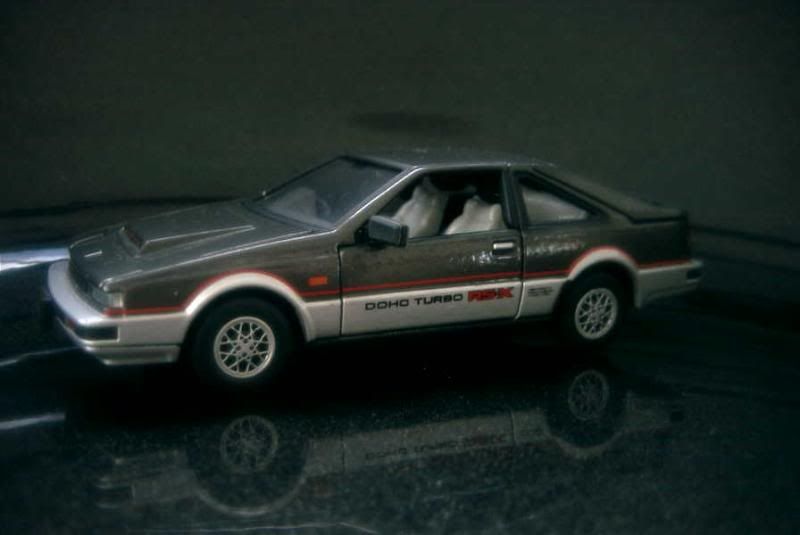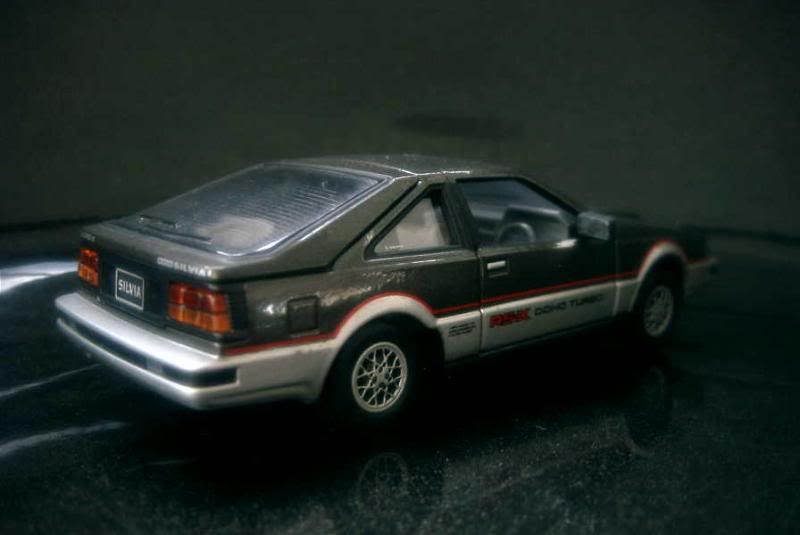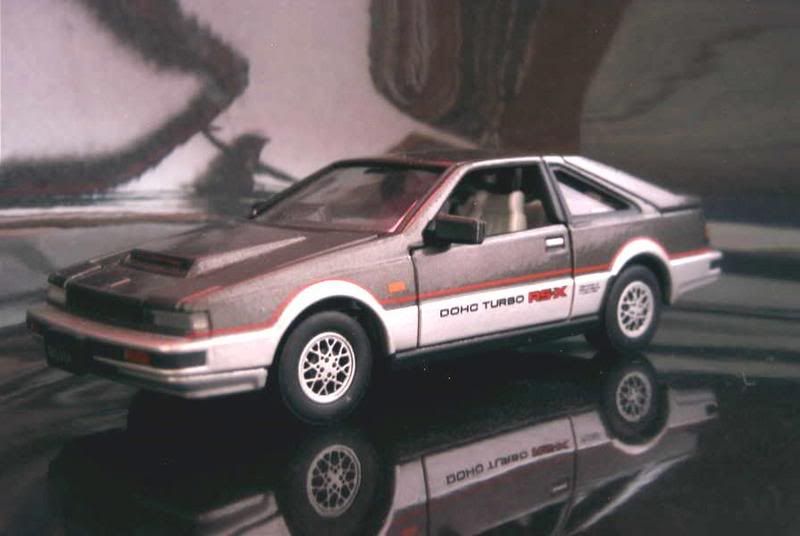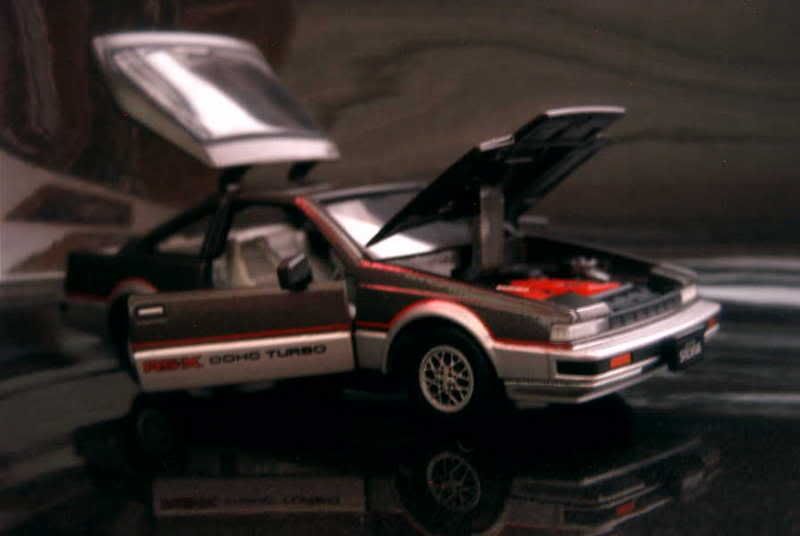Here’s for Danny: the end of the Nissan Silvia’s story.
A little history
The souvenir of the prestigious Silvia hadn’t faded away when, during the mid-Seventies, Nissan was about to launch a new sporty coupe derived from its compact saloons. Consequently the Japanese make decided to resurrect the Silvia name. The new car received the mission of tackling a growing market dominated by the Toyota Celica. Nissan couldn’t know, however, that in the process it was about to create a long-running nameplate that would span over six generations.
The first of the new Silvias (S10) was introduced in October 1975. Powered by a 1.8-litre four, it appeared in the form of an elegant fastback coupe, which style typically mixed Japanese and American influences. For this, and despite the fact that it was relatively unsuccessful, it is my favourite Silvia.
The second Silvia (S110) appeared in March 1979. Base engine remained the 1.8-litre four, but a 2.0-litre, until now reserved for cars exported to the U.S. market, became available. Turbocharged engines and a 2.4-litre four were added later. The S110 introduced a five-speed gearbox and an early form of in-board computer. The fastback style being now out of fashion, the Silvia was a strict coupe, but a hatchback version, named the Gazelle, was also offered. Though still elegant, the style was much more conventional and probably suffered from the very peculiar treatment of the side windows. Nissan also envisioned making the Silvia a contender in rally racing – though it never rivalled cars as the Lancia 037 or the Audi Quattro for the world championship, its exceptional toughness made it a winner in African rallies. A last remark by the way: if the car wasn’t called the S11 as it would have been logical, that’s due to the fact that the name had been already taken by an abandoned prototype of what could have been a Silvia with a rotary engine.
That’s in August 1983 that the third Silvia (S12) came to light. Once again, a Gazelle was offered, but it was now nothing more than a rebadged Silvia sold through a different network of dealerships. Base engine was now the 2.0-litre four, but those who wanted better performances could chose between a 3.0-litre V6 or a turbocharged 1.8-litre four. Many did, as the heavy base car was under-powered and fitted with inadequate brakes.
Nissan took a big leap forward with its new Silvia, released in May 1988 as an early 1989 model. Reasonably futuristic, this S13 enjoyed an instant success that went well beyond that of any other Silvia. Its only (minor) failure was in the release of a convertible variant which, priced much too high, sold poorly and was rapidly discarded.
In October 1993, the S13 was replaced by the Silvia S14. The new car’s style appeared much milder that that of the S13, a default that was partially corrected by a June 1996 facelift. That the S14 didn’t look aggressive enough is ironical, as this generation also saw the disappearance of the hatchback – the new Silvia wasn’t meant to bring a family to its nearest supermarket.
The production of the S14 was stopped late in 1998, in order to convert Nissan’s facilities to the new S15, launched in January 1999. The S15’s task was difficult: the Silvia’s sales had unsurprisingly plummeted after Nissan cancelled the simplest versions – by the time of the S14, the Silvia was a performance-oriented machine fitted with either 2.4-litre or turbocharged 2.0-litre engines. The S15 tried to correct this image by offering only 2.0-litre fours, either naturally aspirated or turbocharged. A Spec-S package, along with a more extreme Spec-R (fitted with a 6-speed gearbox), were proposed. A new convertible was also introduced, this time as a retractable metal-top version developed in cooperation with Autech. All this didn’t help much and the Silvia’s sales, as those of Nissan as a whole, remained sluggish. The Japanese company reacted by rationalizing its range, and the Silvia unfortunately stood among the models that it decided to discontinue. After almost twenty-seven years in production, the last Silvia left the factory in October 2002.
About the model
Model: Nissan Silvia HB Turbo RS-X (S12)
Year: c.1983
Maker: Tomy
Scale: 1/43
Distributed by: Tomica S-Series, ref.0004.
Acquired: brand new, in February 2005, in Manila, Philippines
Though a few gimmicks, and most notably a lot of opening parts, make this model look more like a toy, this is actually a rather detailed and accurate die-cast of the Silvia. I’d give 13/20 to this good model.




A little history
The souvenir of the prestigious Silvia hadn’t faded away when, during the mid-Seventies, Nissan was about to launch a new sporty coupe derived from its compact saloons. Consequently the Japanese make decided to resurrect the Silvia name. The new car received the mission of tackling a growing market dominated by the Toyota Celica. Nissan couldn’t know, however, that in the process it was about to create a long-running nameplate that would span over six generations.
The first of the new Silvias (S10) was introduced in October 1975. Powered by a 1.8-litre four, it appeared in the form of an elegant fastback coupe, which style typically mixed Japanese and American influences. For this, and despite the fact that it was relatively unsuccessful, it is my favourite Silvia.
The second Silvia (S110) appeared in March 1979. Base engine remained the 1.8-litre four, but a 2.0-litre, until now reserved for cars exported to the U.S. market, became available. Turbocharged engines and a 2.4-litre four were added later. The S110 introduced a five-speed gearbox and an early form of in-board computer. The fastback style being now out of fashion, the Silvia was a strict coupe, but a hatchback version, named the Gazelle, was also offered. Though still elegant, the style was much more conventional and probably suffered from the very peculiar treatment of the side windows. Nissan also envisioned making the Silvia a contender in rally racing – though it never rivalled cars as the Lancia 037 or the Audi Quattro for the world championship, its exceptional toughness made it a winner in African rallies. A last remark by the way: if the car wasn’t called the S11 as it would have been logical, that’s due to the fact that the name had been already taken by an abandoned prototype of what could have been a Silvia with a rotary engine.
That’s in August 1983 that the third Silvia (S12) came to light. Once again, a Gazelle was offered, but it was now nothing more than a rebadged Silvia sold through a different network of dealerships. Base engine was now the 2.0-litre four, but those who wanted better performances could chose between a 3.0-litre V6 or a turbocharged 1.8-litre four. Many did, as the heavy base car was under-powered and fitted with inadequate brakes.
Nissan took a big leap forward with its new Silvia, released in May 1988 as an early 1989 model. Reasonably futuristic, this S13 enjoyed an instant success that went well beyond that of any other Silvia. Its only (minor) failure was in the release of a convertible variant which, priced much too high, sold poorly and was rapidly discarded.
In October 1993, the S13 was replaced by the Silvia S14. The new car’s style appeared much milder that that of the S13, a default that was partially corrected by a June 1996 facelift. That the S14 didn’t look aggressive enough is ironical, as this generation also saw the disappearance of the hatchback – the new Silvia wasn’t meant to bring a family to its nearest supermarket.
The production of the S14 was stopped late in 1998, in order to convert Nissan’s facilities to the new S15, launched in January 1999. The S15’s task was difficult: the Silvia’s sales had unsurprisingly plummeted after Nissan cancelled the simplest versions – by the time of the S14, the Silvia was a performance-oriented machine fitted with either 2.4-litre or turbocharged 2.0-litre engines. The S15 tried to correct this image by offering only 2.0-litre fours, either naturally aspirated or turbocharged. A Spec-S package, along with a more extreme Spec-R (fitted with a 6-speed gearbox), were proposed. A new convertible was also introduced, this time as a retractable metal-top version developed in cooperation with Autech. All this didn’t help much and the Silvia’s sales, as those of Nissan as a whole, remained sluggish. The Japanese company reacted by rationalizing its range, and the Silvia unfortunately stood among the models that it decided to discontinue. After almost twenty-seven years in production, the last Silvia left the factory in October 2002.
About the model
Model: Nissan Silvia HB Turbo RS-X (S12)
Year: c.1983
Maker: Tomy
Scale: 1/43
Distributed by: Tomica S-Series, ref.0004.
Acquired: brand new, in February 2005, in Manila, Philippines
Though a few gimmicks, and most notably a lot of opening parts, make this model look more like a toy, this is actually a rather detailed and accurate die-cast of the Silvia. I’d give 13/20 to this good model.







No comments:
Post a Comment